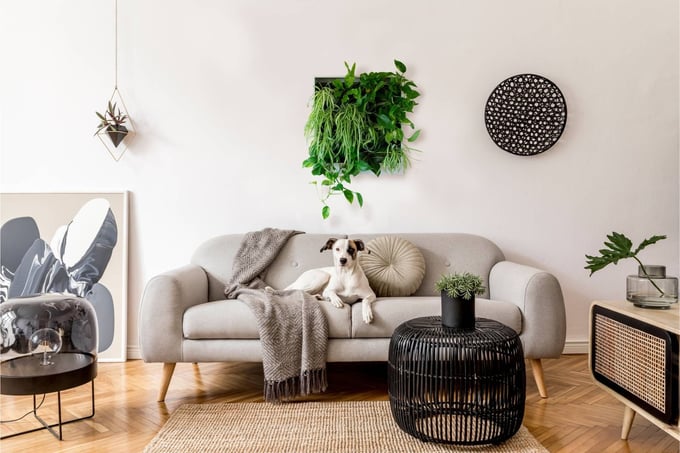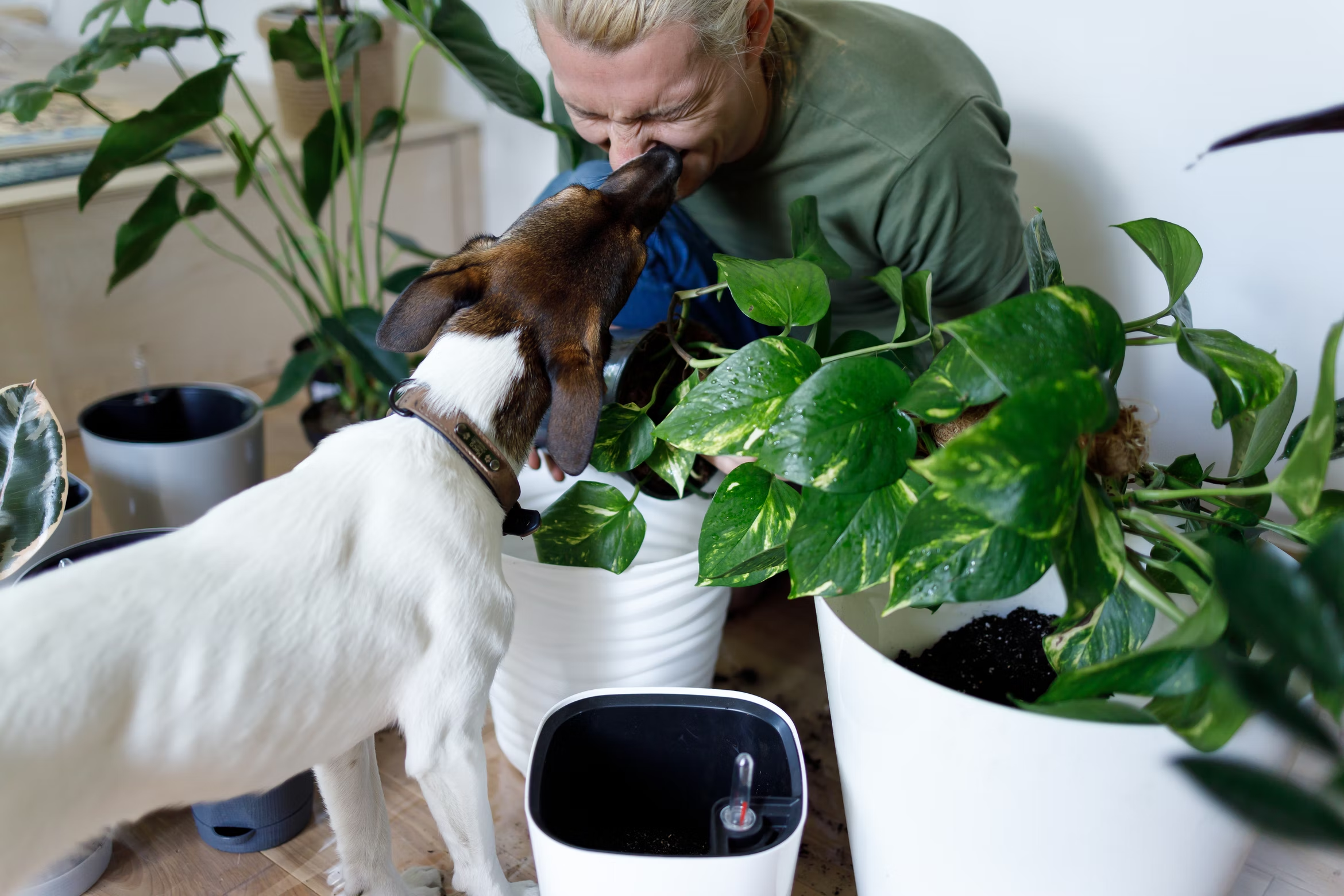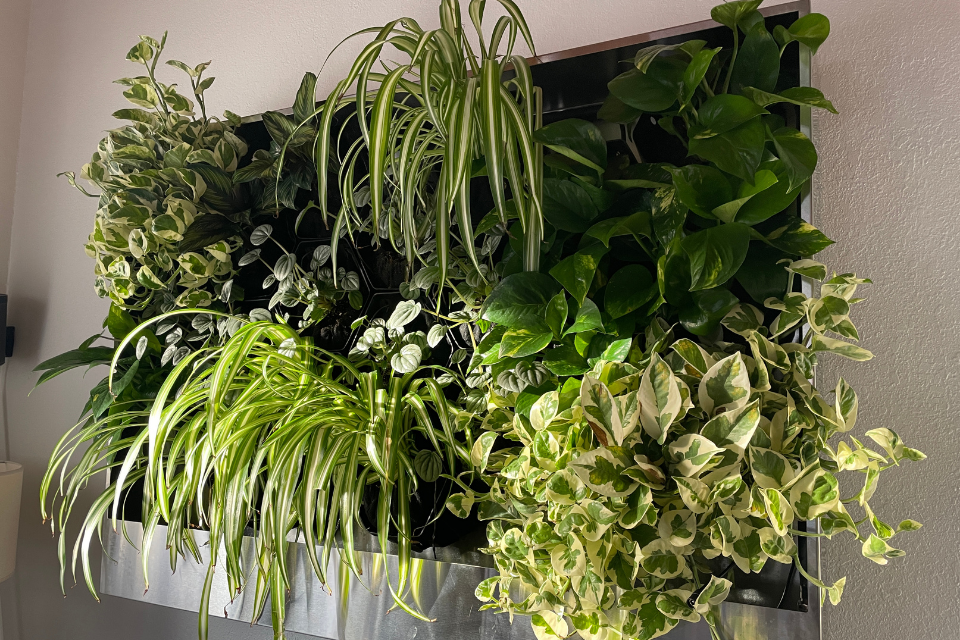Bringing nature into your home or workspace offers numerous health benefits. This is true of both our leafy green and four-legged friends. It’s safe to say that being both a plant parent and a pet parent is super rewarding — but it also poses a unique challenge: keeping pets and potentially toxic plants separate.
Considering that 70% of Americans have a pet in their family, we’re willing to bet that keeping both your pets and your plants safe from one another is of utmost importance.
Luckily, we don’t have to pick one over the other. There are several ways to separate the two effectively, from keeping plants out of pets’ reach to sticking exclusively to non-toxic greenery. Let’s explore some ideas to make sure everyone and everything in our houses are living in harmony.

Out of Sight, Out of (Your Pet’s) Mind
One easy way to ensure your pets are safe from your plants — and vice versa — is to display your plants where your pets can’t, or don’t want to, get to them. It’s important to keep in mind that unless your pet is very small or has perhaps slowed down with age, some of these plant display ideas aren’t totally foolproof (or drool-proof).
- Hanging baskets: If your home is overflowing with plants, you likely have a few in hanging baskets already. These suspended baskets look great in any space, and only bipedal animals (in other words, humans) will be able to reach.
- High shelves: Unless you have climbing cats, keeping plants high up on a shelf or even a plant ladder is always a good option. Window ledges also prove useful for both keeping pets at a distance and offering your plants the sunlight they crave.
- Greenwall: With pets around, it’s always a good idea to keep your greenwall several feet from the ground. Plus, without any surfaces for animals to climb or jump on, your greenwall is safe from wandering paws and teeth.
- Coffee grounds: Most pets don’t love the smell of coffee as much as we do. Used coffee grounds make for great compost to add to your plants’ soil and will deter your pet from sticking their nose and mouth where it doesn’t belong.
Pet-Safe Plants
Sometimes, the best solution is the simplest one. Particularly if you’re committed to your greenwall, it can be difficult to separate your plants and pets entirely.
Whether you have an infinitely curious creature or are just looking to eradicate any and all harmful plants in your home, there are dozens of plants out there that are non-toxic to cats and dogs, including:
- Boston fern: This vibrant potted plant is so low maintenance, it’s known to last years, if not decades.
- Burro’s tail: The burro’s tail is a quaint succulent-type plant with long strands of bright green bulbs.
- Basil: This versatile herb will bring fragrance and flavor into your home, and it’s safe for pets if ingested.
- Orchid: Whether you’d like to add a pop of (different) color to your greenwall or keep it out as a nice table centerpiece, the orchid is a low-maintenance flower that’s safe to keep around animals.
For even more pet-friendly plant inspiration, you can find lists of plants safe for cats and dogs from the ASPCA.

Safety Tips for Pet-and-Plant Parents
Nature is all about balance. Strike the perfect one with both your furry and frond-y friends while keeping the following safety tips in mind:
- Do your research: If you’re preparing to make your home greener with new plants, make sure to research whether they’re safe to keep around animals.
- Monitor pets around wild plants: Weeds and grass grow in our yards without much say from us. Make sure your pets aren’t eating any plants they shouldn’t whether you grew them or not.
- Keep emergency info handy: Even if your house is totally safe for pets, it’s always a good idea to keep emergency contact information nearby. Keep both Poison Control and your emergency vet info somewhere accessible, like in your phone or on the fridge.
- Invest in pet insurance: Just like you keep your car and property proactively protected, you can ensure your pets, as well. Pet insurance can come to the rescue when you need it the most.
If you found the above tips helpful and are interested in learning more about pet safety around plants, check out Lemonade’s infographic below.




